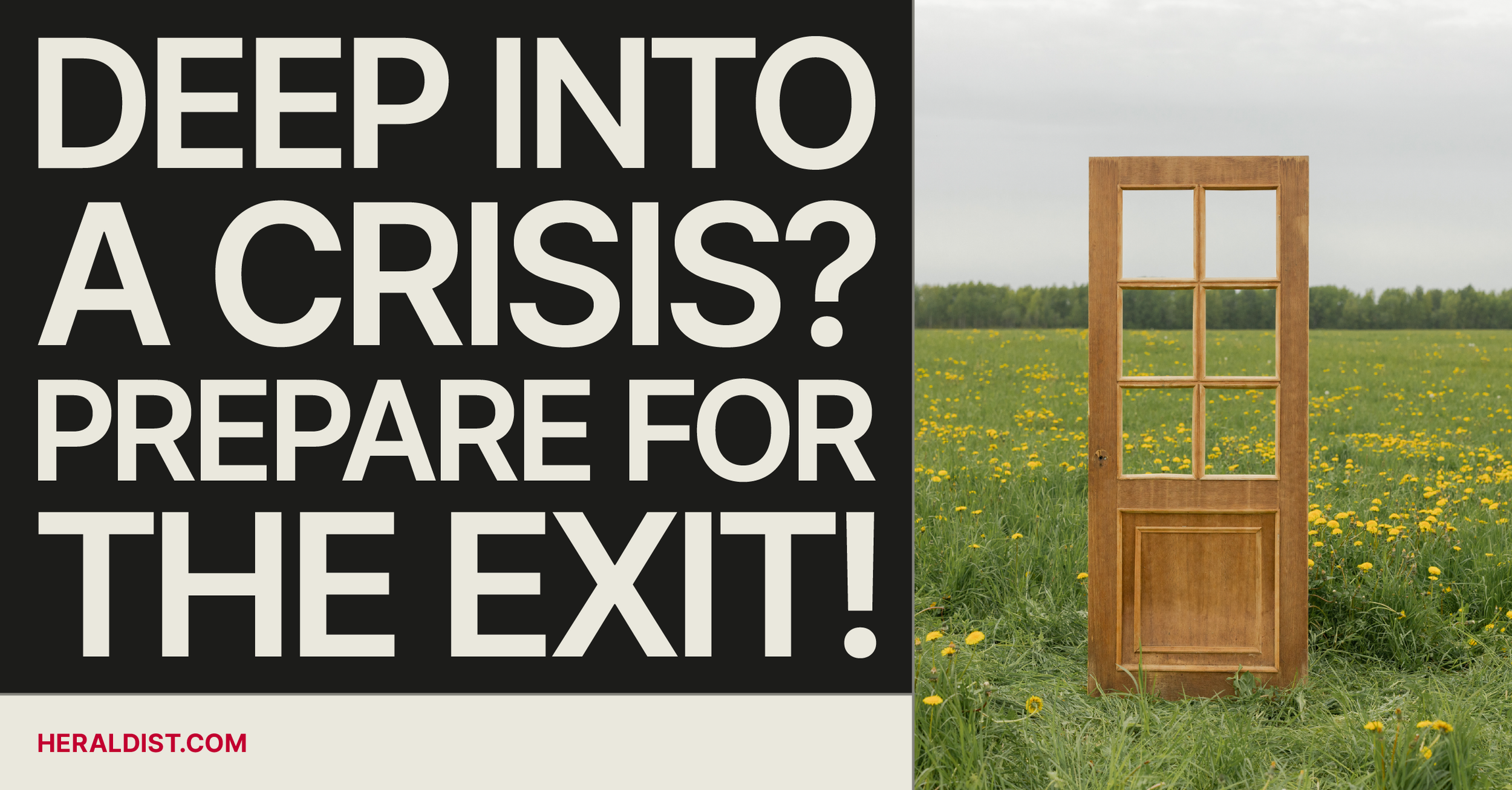Deep into a Crisis? Prepare for the exit!
As nasty and disturbing as they are, all crises have two positives in common: they’re short and when they end, they are followed by periods of steep economic growth.
Strong brands, invariably, focus not on the crisis but on the periods of economic growth that follow and prepare to be in top shape when consumers return to the market, ready to spend.
The evidence gathered by academics, marketing scientists, and top practitioners shows that while their competitors are cutting expenses - in operational, in marketing, in R&D - the companies that came out of the crisis stronger did the exact opposite - they chose to invest and they thought carefully about how to invest.
Cutting costs - and, oh, we know so well, the first cuts are the “marketing expenses” - is actually one of the least inspired measures a company can take. Fun fact: HBR calls the cutting of marketing budgets in the crisis "today's equivalent of bleeding", which, although it was thought a method of healing medieval patients, only reduced their power to fight the disease.
The perfect moment to gain market share is when your competitors cut costs and weaken their position; cutting brings them financial benefits in the short term, of course. But let's not forget how we started: crises are short. The benefits of budget cuts are short-term. Isn't it smarter to focus on the long term?
Let’s see the best ways for brands to navigate a crisis, based on evidence:
1. Choose mindfully how much to spend
Companies that cut communication budgets and presence during the crisis have large decreases in purchasing and brand image immediately after the crisis.
When what we call Share-of-Voice (how much of what your industry communicates is your voice) decreases, the market share also decreases. And then it takes years (on average, 6 years) to reach the market share you had before the crisis. (Millward Brown research)
On the other hand, if you maintain the Share-of-Voice or increase it, you will see an important increase in market share in the first years after the crisis.
Now, the best bit is that, in most cases, maintaining or increasing Share-of-Voice does not even mean an additional expense, because it automatically increases once competitors decrease theirs (the autopilot decision of cutting costs); when competitors decide to cut budgets, your voice is easier to hear; in addition, when brands withdraw or cut their campaigns, media prices tend to decrease.
2. Choose how to spend
See what happened to your consumers or customers and answer their new needs and motivations.
Go for a new target audience. An example is the now famous case of prosecco brands targeting champagne consumers during the 2008 economic crisis. And what we see every day in our supermarkets - private labels entering the basket of consumers that used to buy brands.
Do a price repositioning (not to be confused with discounting!). The target audience remains the same but the price and the message change to address people’s new preoccupations. Romania’s biggest supermarket network, MegaImage has been doing this in the last years, price repositioning through enlarging its private label products range and communicating on price. The inspiration could come from US’s Target, who did the same thing in 2008 and came out of the crisis much stronger than before this hit.
3. Choose the right message
Let’s not whine together (remember the “together” plethora of ads during the COVID-19 lockdown) but show how your brand can answer people’s new reality.
In a crisis, the brand is more important than ever. Brand campaigns reduce people's price sensitivity and protect profit margins. Use emotion and storytelling to connect with people, so they keep you on their mental list when they return to shopping.
For example, Coca-Cola did a better job than most of the big brands during the COVID-19 lockdown; the brand used its advertising budget to celebrate the frontline workers, creating mini-stories of these heroes. But the Coca-Cola brand was there, infusing its forever-present optimism in all messages.
Marketing in a recession is not easy; and, of course, there’s no one solution to fit all brands and all situations. Just remember not to let yourself be swallowed in the crisis vortex of bad decisions and remember to prepare for the sunny aftermath of the storm.
By Mirela Angelescu

